by Jude Rogers.
1. Simple Lines
Left, right, left, right. This is my favourite rhythm. Heel to toe, heel to toe, tarmac and kerbstone meet leather and rubber.
Before the first of my walks I offer you a warning: I’m far your conventional, fancy flaneur. Baudelaire probably waved his hair beautifully into the wind while he walked; I let mine skidaddle in the air, unwashed and silvery. I’m no Iain Sinclair either; I only care about lines that guide me across zebras, or past red and green men. My heart doesn’t pine for the leys that may or may not exist. Instead it beats for the Lee Navigation River I can trace with my feet, the Lea Valley Walk that quickens my pulse, the blood through the limbs to the brain to the eyes and back again, the heel to toe, heel to toe, left, right, left, right.
I walk because I want to get from A to B. I do so mostly by foot rather than by other bus, tube or car because I want to take things in, to store pictures in my mind, whether the things that I see are permanent or passing by. My walks are also mostly in London because I live here, but I often leave things early, or go out of my way, to try new routes, or find new sights to lift the chin.
I also find that the best walks are the ones you do most, the ones you hardly ever think about. These are the walks where one day, out of nowhere, out of the cold, grimy everywhere, the real colours and contours of a place reach out and run off with you. This explains, I suppose, my decision to begin with a walk I do often, a mile and a half journey that is very unglamorous. Nevertheless, it is one that reveals new things to me every time I do it.
Come with me to the sorting office, heel to toe, heel to toe.
a. Monday morning, the sky bright and blue. Upturned wine bottles and unread supplements in groaning recycling bins. Scaffolding that never comes down struck dumb by sunlight. Clonbrock Road curves at the top like a walking stick, and the strange, concrete building that sits on its crook leers out. It always does. Like something out of a children’s novel, it is eerie, unreal, squeezed tight between houses as if tutting at the bomb damage. Its pointed roof makes it ancient, its concrete mould makes it modern. It hovers a ghost at the start of my journey. I’m sure its dark windows always blink as I pass.
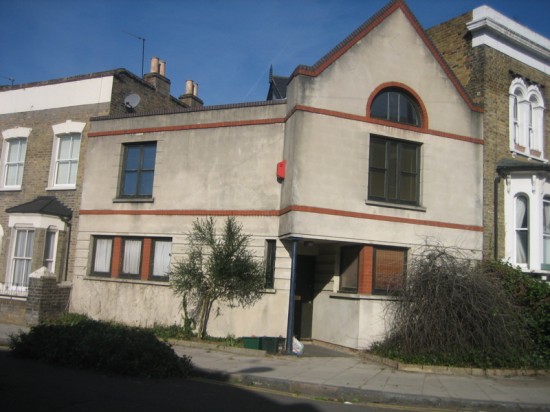
b. Telephone exchanges dressed with empty patisserie paper bags. A smashed bottle on the road that belongs to Big Tom, and not Bulmers. This is Stoke Newington, the dwelling pond of a certain kind of liberal, who tells shop staff what to do while his own little devils run wild. I like different things about this place. My cheap rent. Living with my boyfriend. Good friends living close by. Musty pubs that still smell of drip-trays and disappointment. Tyre shops and roads named after Daniel Defoe, and the loveliness I find in quiet street corners like this one, weathered walls standing shyly while the day overpowers them.
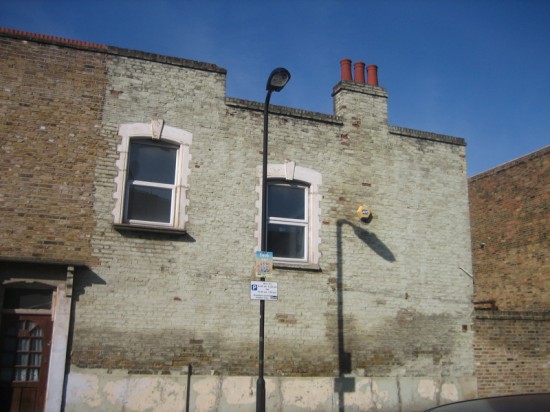
c. Bouverie Road stretches north, away from Ladbrokes on Church Street, a patch of old-fashioned pleasure in the chi-chi cafés and clothes shops. It turns its palm upward, away from the busyness. On the right, sits the scout hut, something I’ve only just noticed, innocent and reticent at the side of the road. The sign is delicate and lovely, but black semiquavers are on fire in the red and orange flames. It looks like they are screaming rather than dancing. It makes me wonder where the boy scouts have gone to.
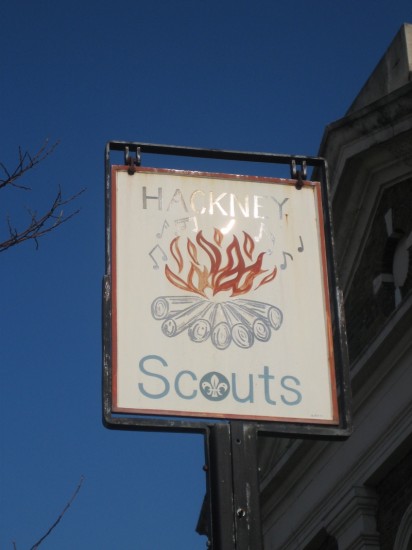
d. Perhaps here, further up, at the back of Abney Park cemetery. There are perfect playgrounds, and then there is this one. The functional climbing frame. The dirty, dusty slide. A brick wall. Some barbed wire. And over the top of it, the vines that rise from the dead on the other side of the boundary, from the thick moss and brown earth that break doggedly through the gravestones. It makes you wonder who precisely is being kept in, and who out.
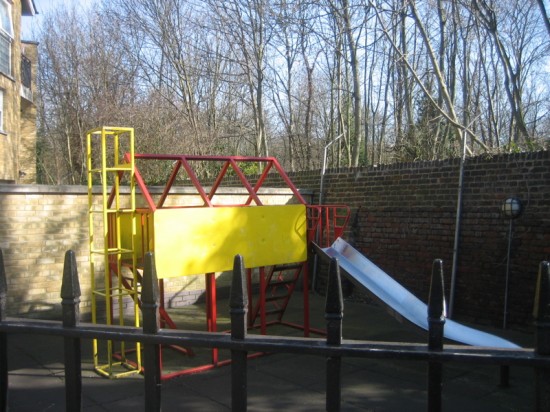
e. Past Manor Road, the hats begin to appear on Heathfield. Shtreimels and spodiks on the grown-ups, yarmulkes on their sons. When it rains, blue carrier bags from corner shops cover the heads of the elders, shielding their heads from the heavens. The Hasidic men are always pounding the pavements, walking towards the tower blocks in a line on the horizon. One, two, three, like a chazakah. Black coats and black shoes, my black coat and black boots, us all walking in line, towards the tall, Shabbat candles.
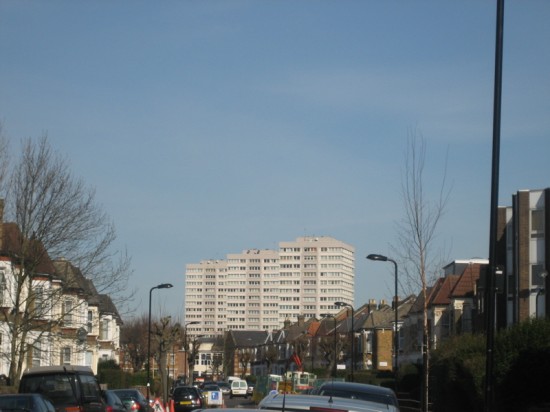
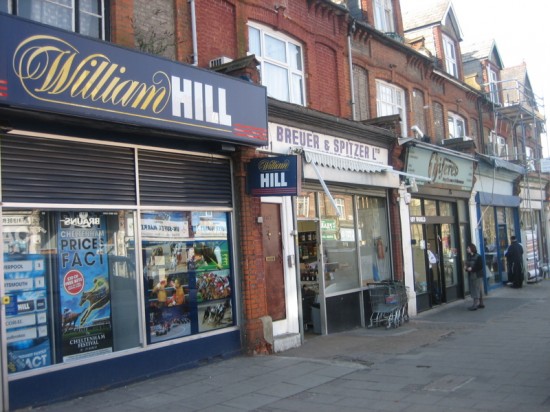
f. On Dunsmure Road, the Gone Fishing sign glows between buildings, among the bagels and the booksellers, the old shop-signs and frock coats, the paper slips and Diet Coke cans. Breuer and Spitzer sits uneasily next to William Hill, two different ages colliding. In London, anomalies are certainties, which is why I love it so much.
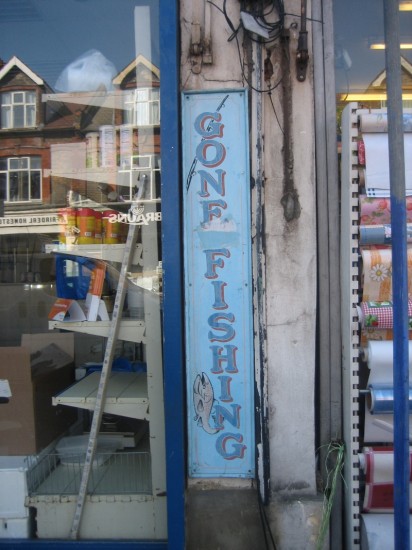
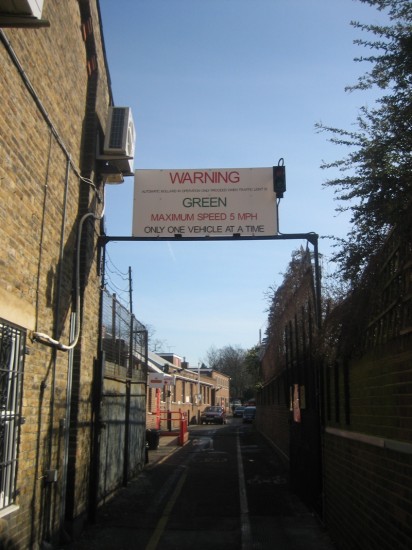
g. The parade of shops ends at West Bank, but there is no River Jordan here, no water to stay away from the parcels and packages. A railway line burrows here instead, wild with London planes and local birds, reaching up to the East Bank in long fingers of grass. I have arrived. Green is go. The red card lets me enter, my pink driving licence lets me pass. I leave with a white jiffy bag, and I wander back to the high street, my dark soles warm and sure, ready to return.